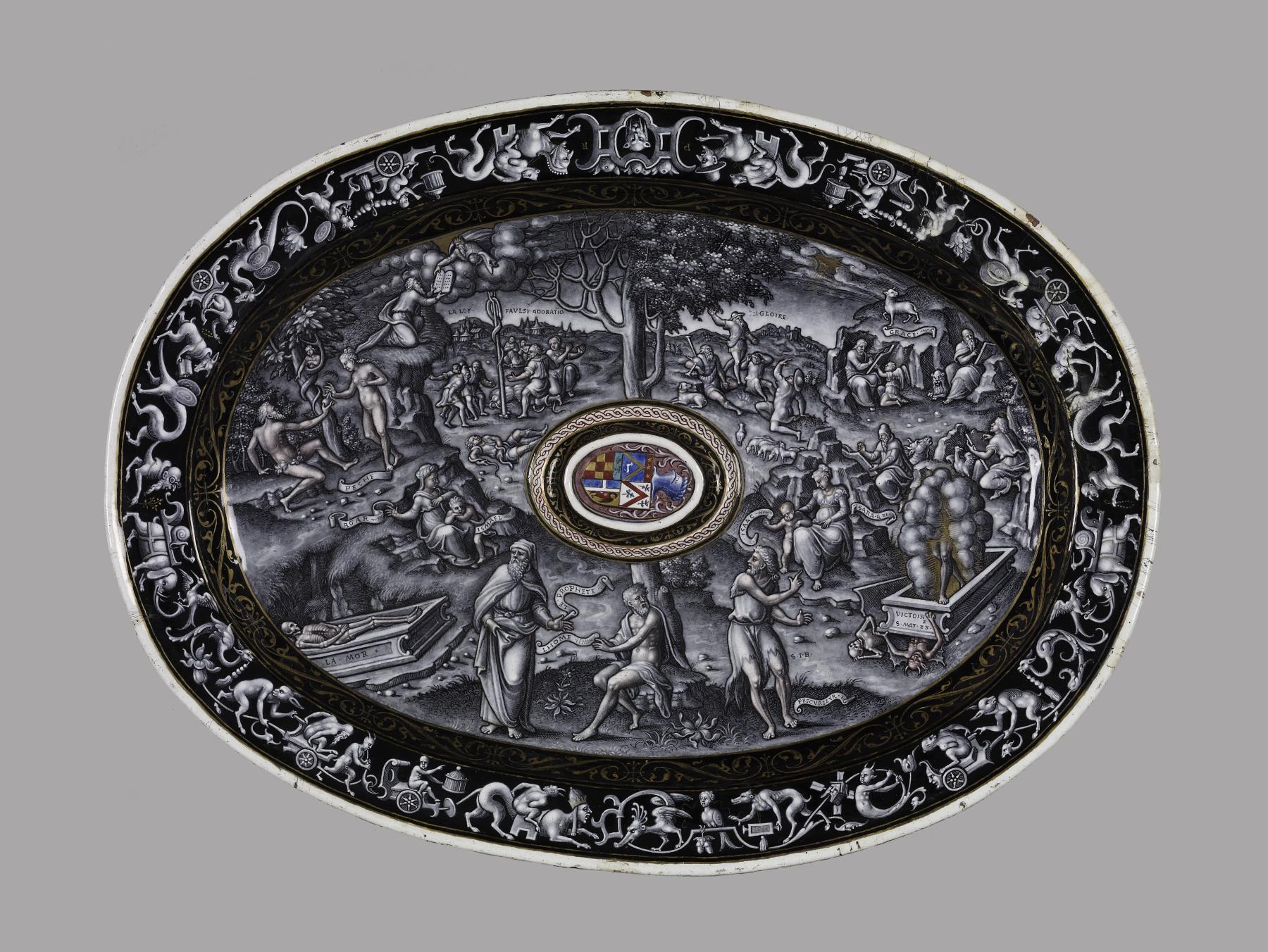Oval Stand for Ewer: Allegory of the Redemption
(Renaissance Europe )
In Northern Europe the cultural revolution of the Renaissance developed alongside the religious and political revolution embodied in the Reformation. This ewer-stand is decorated with a Lutheran allegory in which Man is placed between Sin and Redemption. Man is seated at the foot of a tree which is withered on the left side and in bloom on the right. On the left of the composition are pictured the Original Sin of Adam and Eve and other scenes from the Old Testament. Death is represented allegorically by the skeleton stretched on a tomb. On the right is the Lamb of God, symbolic of the Grace bestowed on Man in the New Testament. The resurrecting figure of Christ rising from the tomb represents the victory over Sin and Death. The enamel states in visual terms the teachings of St. Paul that man's salvation depends solely on the Grace of God and not on the prescriptions of the Old Testament Law or of the Church of Rome.
Parading around the border are all manner of fantastic creatures- a windmill with a face, trumpeting fauns, snails riding elephants, hares, dragons and even irreverent caricatures of an emperor, a pope, a cardinal and two monks. Such grotesques were the product of the lively imaginations of French and Flemish artists who were working at the French royal court at Fontainebleau.
Provenance
Provenance (from the French provenir, 'to come from/forth') is the chronology of the ownership, custody, or location of a historical object. Learn more about provenance at the Walters.
George Robinson Harding, London, by purchase; Henry Walters, Baltimore, 1911, by purchase; Walters Art Museum, 1931, by bequest.
Exhibitions
| 2017 | Uncertain Times: Martin Luther's Remedies for the Soul. The Walters Art Museum, Baltimore. |
Conservation
| Date | Description | Narrative |
|---|---|---|
| 1/15/1959 | Treatment | repaired |
| 11/16/1987 | Treatment | cleaned; examined for condition |
| 3/10/2017 | Examination | cleaned; examined for exhibition |
| 5/10/2017 | Treatment | cleaned |
Geographies
France, Limoges (Place of Origin)
Measurements
W: 14 9/16 x L: 19 3/4 in. (37 x 50.2 cm)
Credit Line
Acquired by Henry Walters, 1911
Location in Museum
Not on view
Accession Number
In libraries, galleries, museums, and archives, an accession number is a unique identifier assigned to each object in the collection.
In libraries, galleries, museums, and archives, an accession number is a unique identifier assigned to each object in the collection.
44.357








